This post was last updated on December 3rd, 2022 at 07:42 pm
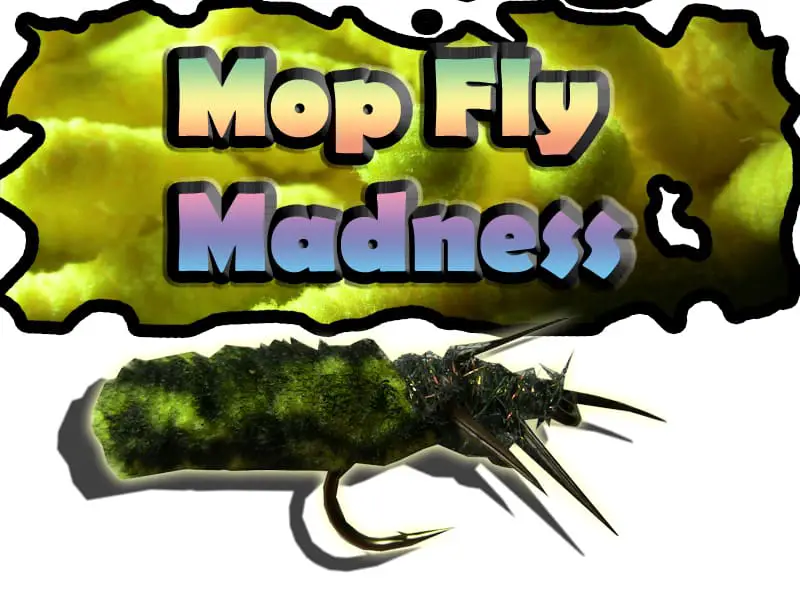
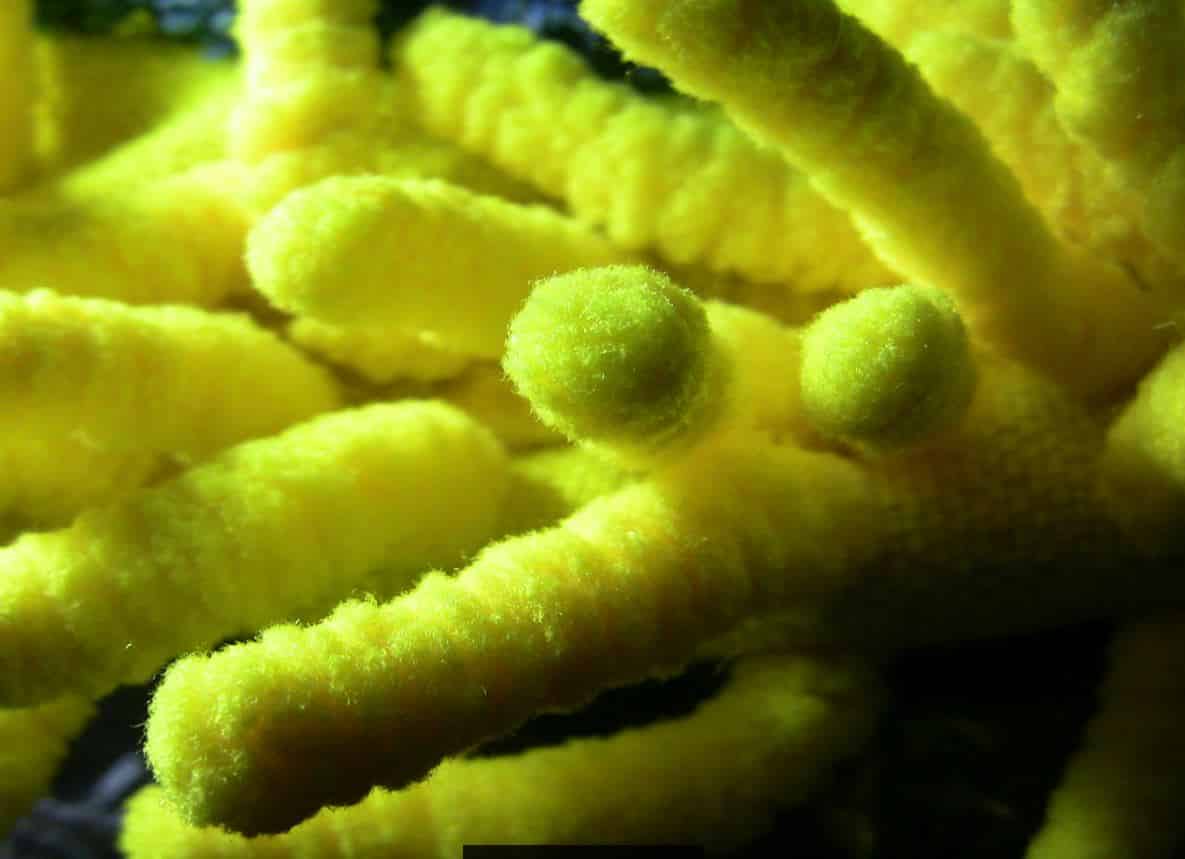 Mop flies are all the rage these days. It is essentially a thick durable chenille material that you can purchase at any hardware or cleaning store from the mop aisle. It is available in tons of colors, but perhaps the best strategy is to buy a white mop and color your flies with some permanent marker. (Here is a link to a very large white dust mop on Amazon that will work very well) This new tying material has endless uses and many great benefits. It also has people who find it to be a repulsive non natural material who would not even buy this stuff to mop the floor. Personally I find it to be a great material for tying caddis, large worms and even stoneflies.
Mop flies are all the rage these days. It is essentially a thick durable chenille material that you can purchase at any hardware or cleaning store from the mop aisle. It is available in tons of colors, but perhaps the best strategy is to buy a white mop and color your flies with some permanent marker. (Here is a link to a very large white dust mop on Amazon that will work very well) This new tying material has endless uses and many great benefits. It also has people who find it to be a repulsive non natural material who would not even buy this stuff to mop the floor. Personally I find it to be a great material for tying caddis, large worms and even stoneflies.
The Mop Fly Cased Caddis
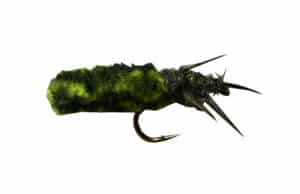 This mop material makes caddis larvae about as good as anything. It really shines when making a cased caddis variation like the one shown in the image above. Frankly I’m not sure how any trout could turn this thing down! It is tied with a few wraps of lead wire to get it down a little faster, because this material is not very fast sinking.
This mop material makes caddis larvae about as good as anything. It really shines when making a cased caddis variation like the one shown in the image above. Frankly I’m not sure how any trout could turn this thing down! It is tied with a few wraps of lead wire to get it down a little faster, because this material is not very fast sinking.
Tying Materials list
- #10 egg hook
- Lead wire
- Ice dub (Peacock color)
- Black goose biots
- Mop
The Mop Night crawler
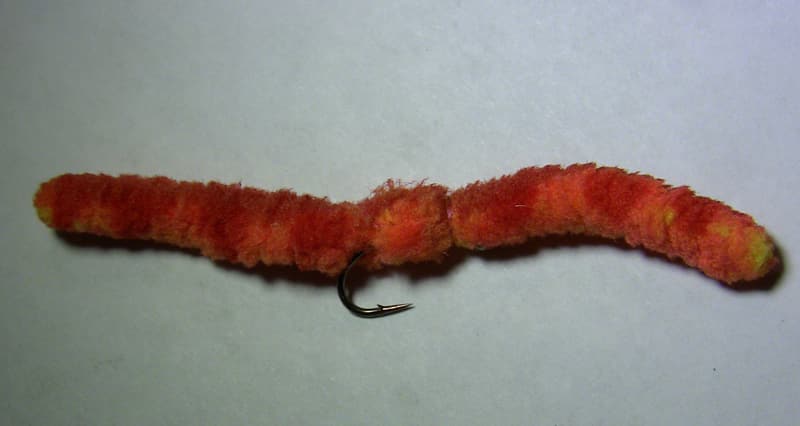
This big beautiful night crawler (BBN) is sure to start an argument with your elitist fishing buddies, who wont even use a San Juan worm. This is essentially 2 pieces of mop material tied to a hook. In the center it is another small piece of mop wrapped around and trimmed to match the size of the rest of the BBN. The way this fly undulates underwater, any trout who’s looking for a big meal will happily eat it.
The Mop Stonefly Pattern
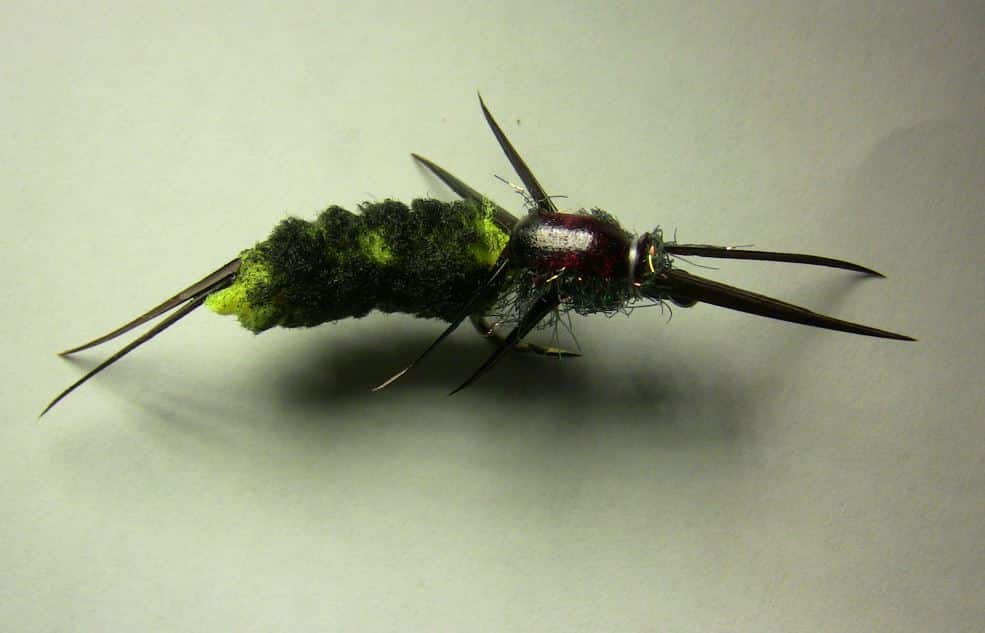 This is almost the same as the mop caddis larva above, except I’ve glued goose biots to the tail and added a latex scud back material for the wing case. I think this will be an exceptional pattern during the salmonfly hatch and throughout the summer when large golden stones are out and about.
This is almost the same as the mop caddis larva above, except I’ve glued goose biots to the tail and added a latex scud back material for the wing case. I think this will be an exceptional pattern during the salmonfly hatch and throughout the summer when large golden stones are out and about.
Once you start tying flies using a dust mop, you’ll find that the possibilities are endless with this material. Get creative and see what you can come up with.
